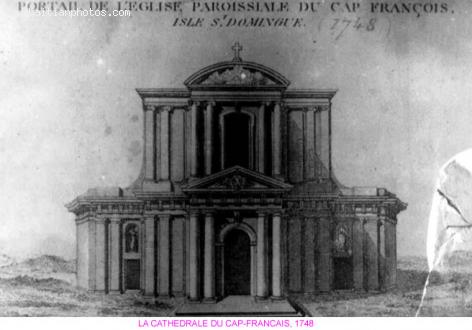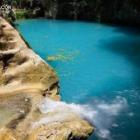ADVERTISEMENT
north
Nawoon Marcellus, candidate for Bouclier in Nord
Here is a picture of Mr. Nawoon Marcellus, candidate for Bouclier in the Nord Department
Nawoon Marcellus First Muslim in Parliament. He served as a member of the Chamber of Deputies (COD) under the Aristide administration 2001-2004. Originally he was a member of the disbanded Lavalas Family party.
Marcellus enjoyed the achievement of one who professed his Muslim faith as being the first person of his religion to be elected to the COD.
Muslims in Haiti number 4,000-5,000 and have become identifiable in recent years, living peacefully side-by-side with Catholics and Voodooists.
Cap-Haitien Cathedral Vandalized
Cap-Haïtien Cathedral, a church of historical significance, was viciously vandalized in 2011. The miscreants were rumored to be part of Fanmi Lavalas, former President Jean-Bertrand Aristide's party.
Debasement of the Cathedral sent shock waves throughout the predominately Catholic community. The days of being able to seek sanctuary within its walls is over.
The attack seemed to co-incide with the return of Aristide after seven years exiled in Africa. Archbishop Kebreau called upon President Martelly to adopt a law-and-order approach to ruling Haiti.
CATHEDRALE DU CAP-FRANCAIS in 1748
Here is a picture of CATHEDRALE DU CAP-FRANCAIS in 1748 in Cap-Haitian
Treasured Architecture Cap-Haitien Cathedral
Cap-Haitien Cathedral is one of the most visually stunning pieces of architecture in town. Found on the main plaza, it has been lovingly cared for since its completion in the early 20th century.
On the church site, a part of Haiti's history is symbolized by a statue of Mackandal. He led an army of black slaves, the Maroons, fighting to emancipate themselves from French-occupied Haiti in 1712.
The Cathedral, once named Cathedral of Notre Dame, is now the Cathedral of Our Lady.
Dauphin Plantation In Caracol Major Producer Of Production Of Sisal And Fiber Rope
What you are looking at is a building that was used by Dauphin Plantation in North of Haiti for the production of Sisal and Fiber Rope.
Since Dauphin Plantation was the main employer of the region of Caracol and the entire North section of Haiti, when the company closed, the entire region suffered.
Dauphin Plantation In The 19th Century, Making Sisal And Fiber Rope In Caracol
Here is a picture of an industry that was at one time the life line of Haiti. At the turn of the 19th century,Dauphin Plantation was the largest employer in Haiti, providing jobs to over two thousands people. Many people still remember today how things were in the region when the company was in existance.
The economy of Caracol was booming. Most of the job involved the pressing of Sisal Plants for the production of fiber ropes and other products.
Dauphin Plantation Considered First Industrial Park In North Of Haiti, Producing Sisal And Fiber Rope
Caracol Industrial Park is not considered the first industrial park in North of Haiti or even in Caracol. Dauphin Plantation was the first, specialized in the production of Sisal and Fiber Rope
At the beginning of the 19th century, Dauphin Plantation was the largest employer in Haiti, providing jobs to over two thousands people. Most of the job involved the pressing of Sisal Plants for the production of fiber ropes and other products.








 All inclusive Royal Decameron Indigo
All inclusive Royal Decameron Indigo  Love between Barack and Michelle Obama
Love between Barack and Michelle Obama  Who will be the next president of Haiti?
Who will be the next president of Haiti?  Paul Eugène Magloire, born in Quartier Morin
Paul Eugène Magloire, born in Quartier Morin  Jean Henry Céant deposited documents in Parliament for...
Jean Henry Céant deposited documents in Parliament for...  Jovenel Moïse nominated Jean Henry Céant as prime minister of...
Jovenel Moïse nominated Jean Henry Céant as prime minister of...  Jovenel Moise, the president has spoken. Period
Jovenel Moise, the president has spoken. Period  Dr. Michaëlle Amédée Gédéon is dead
Dr. Michaëlle Amédée Gédéon is dead 



